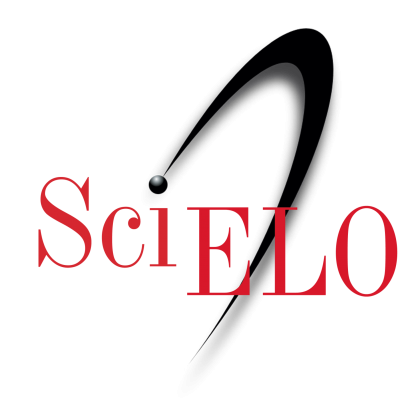DOI:
https://doi.org/10.14483/22487085.2930Published:
2011-01-01Issue:
Vol 13, No 1 (2011) January-JuneSection:
Research ArticlesFostering fifth graders’ reading comprehension through the use of intensive reading in physical science
La comprensión de lectura de estudiantes de quinto grado a través del uso de la lectura en la clase de ciencias
Keywords:
Comprensión de lectura, procesos cognitivos, enseñanza de la ciencia, estrategias de lenguaje (es).Keywords:
Content Area Reading, Reading Comprehension, Cognitive Processes, Science Instruction, Language Strategies (en).Downloads
Abstract (en)
Reading comprehension in a content area needs to be seen from both the content and language perspectives. This paper examines the use of intensive reading, a strategy taken from the language teaching field, to help students improve their reading comprehension ability and develop understanding of science concepts. The study was carried out in a fifth grade class at a private bilingual institution of Bogotá. Reading was analyzed using a mixed-method approach that utilizes both qualitative and quantitative methods. The first method was done through students’ interviews, artefacts, and a teacher’s journal, and the second by means of two reading tests, Cloze and CARI, Content Area Reading Inventory Test. The statistical analysis shows that students improved their reading comprehension ability as their scores for the post-test were higher than those of the pre-test; this increment is statistically significant as p ≤ .05 when applying a t-test. The qualitative analysis shows that structured reading practices lead to the development of students’ cognitive processes. Overall, the results indicate that reading in science should be seen as dynamic process that incorporates learners’ strategies in order to develop conceptual understanding.
Abstract (es)
La comprensión de lectura en una clase como ciencias físicas a través de una segunda lengua debe ser vista desde la perspectiva del contenido y el lenguaje. Este trabajo examina el uso de la estrategia lectura en detalle, una estrategia tomada de la enseñanza de la lengua, para ayudar a los estudiantes a mejorar su comprensión de lectura y comprender conceptos de la ciencia. El estudio fue realizado en una clase de quinto de primaria de un colegio bilingüe de la ciudad de Bogotá. Se utilizó un método de análisis mixto que tiene en cuenta tanto métodos cualitativos como cuantitativos. El primer método utilizó entrevistas a los estudiantes al igual que producciones en clase, y diario de campo del investigador y el segundo método, dos tipos de test de comprensión de lectura, Cloze y CARI – Test tipo Cuestionario para Áreas cuyo medio de instrucción es la segunda lengua. El análisis estadístico muestra que los estudiantes mejoraron su comprensión de lectura ya que los resultados para el post-test son mayores que aquellos del pre-test; este incremento es estadísticamente significativo, p ≤ .05 una vez que la prueba-t es aplicada a los datos. Por otra parte, el análisis cualitativo muestra que prácticas estructuradas de lectura conllevan al desarrollo de procesos cognitivos por parte del estudiante. En general los resultados indican que la lectura en ciencias debe ser vista como un proceso dinámico que tiene en cuenta las estrategias de los estudiantes para desarrollar comprensión de conceptos.
References
Artola, T. (1991). El procedimiento cloze: una revisión general. Revista Complutense de Educación 2.1. (1991): 69 -81. Versión PDF.
Atorresi, A. (2009). Aportes para la enseñanza de la lectura, SERCE Segundo Estudio Regional Comparativo y Explicativo. Chile: UNESCO.
Auerbach, C. F. (2003). Qualitative Data: An Introduction to Coding and Analysis. New York : NYU press.
Bloom, B. (1971). Taxonomía de los Objetivos de la Educación. Buenos Aires: El Ateneo Editorial.
Brown, H. D. (2004). Language Assessment Principles and Classroom Practices. White Plains, NY: Pearson Education.
Burns, A. (1999). Collaborative action research for English language teachers. Cambridge: Cambridge University Press.
Burns, A. (2010). Doing Action Research in English Language Teaching. New York: Routledge.
Condemarín, M. Evaluación de la Comprensión Lectora. Lectura y Vida 2.2 1981: 5-16.
Chatal, R. (2001). Diagnostic and Instructional Uses of the Cloze Procedure. The Nera Journal, 37 (1), 3-6.
Chávez, V. (1987). Estrategias pedagógicas para incrementar la comprensión lectora en grado décimo del Colegio San José de Gualmatán. Pasto, Colombia: Universidad Externado de Colombia.
Coyle, D. (2005). Planning Tools for Teachers. Retrieved August 21st, 2010 from http://www.slideshare.net/gorettiblanch/theoretical-clil-framework
Coyle, D., Hood, P., & Marsh, D. (2010). CLIL Content and Language Integrated Learning. United Kingdom: Cambridge University Press.
Eskey, D. (2005). Reading in Second Language. In Hinkel (Ed.) Handbook of Research in Second Language Teaching and Learning.
Gagné, E. D. (1985). La Psicología Cognitiva del Aprendizaje Escolar. Traducción de Paloma Linares. Madrid: Visor Distribuciones, S.A.
Goodman, K. (1996) La lectura, la escritura y los textos escritos: una perspectiva transaccional sociopsicolingüística. Revista Textos en contexto II (1996): 9 - 68.
Hall, M. & Austin, T. (2004). Content-Based Second Language Teaching and Learning. United States: Pearson Education, Inc.
Hedgcock, J. & Ferris, D. (2009). Teaching Readers of English. New York: Routledge.
Lankshear, C. & Knobel, M. (2004). Teacher Research: from Design to Implementation. New York: Open University Press.
Mehisto, P., Marsh, D., & Frigols, M. (2008). Uncovering CLIL. China: Macmillan Publishers Limited.
Mills, G. (1999). Action Research: A guide for the Teacher Researcher. Prentice
Navarro, M. (1987). Elementos para formular una teoría sobre el proceso de comprensión de lectura. Trabajo de Grado para el título Magister en Educación. Bogotá, Colombia: Universidad de la Sabana.
Nation, P. (2004). Vocabulary Reading and Intensive Reading. EA Journal (21) 2: 20-29.
Nutall, C. (1996). Teaching Reading Skills in a Foreign Language. Great Britain: Heineman.
Sadeghi, K (2008). Measuring Reading Comprehension: The Judgmental Validity of Cloze Procedure. International Journal of American Linguistics 11.2: 115 -130.
Sagor, R. (2005). The Action Research Guidebook. Thousand Oaks, CA: Corwin Press.
Sejnost, R. (2007). Reading and Writing across Content Areas. Thousand Oaks, CA: Corwin Press.
Sijtsma, K. & Molenaar, I. (2002). Introduction to Nonparametric Item Response Theory. London: Sage Publications.
Snow, M., Met, M., & Genesse, F. (1989). A Conceptual Framework for the Integration of Language and Content in Second/Foreign Language Instruction. TESOL Quarterly, (23) 2 : 201 – 217.
How to Cite
APA
ACM
ACS
ABNT
Chicago
Harvard
IEEE
MLA
Turabian
Vancouver
Download Citation
Metrics
License
This work is licensed under a Creative Commons Attribution-NonCommercial-NoDerivatives 4.0 International License.
Attribution — You must give appropriate credit, provide a link to the license, and indicate if changes were made. You may do so in any reasonable manner, but not in any way that suggests the licensor endorses you or your use.
NonCommercial — You may not use the material for commercial purposes.
NoDerivatives — If you remix, transform, or build upon the material, you may not distribute the modified material.
The journal allow the author(s) to hold the copyright without restrictions. Also, The Colombian Apllied Linguistics Journal will allow the author(s) to retain publishing rights without restrictions.













.JPG)










